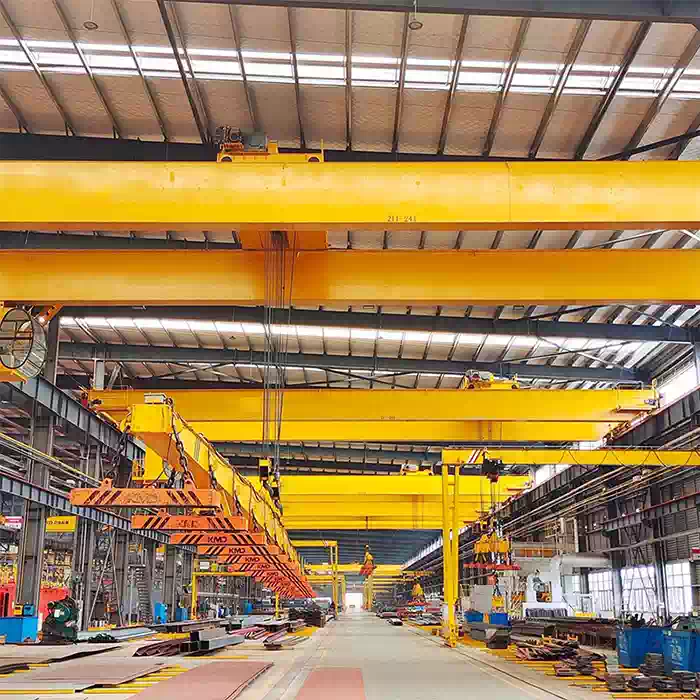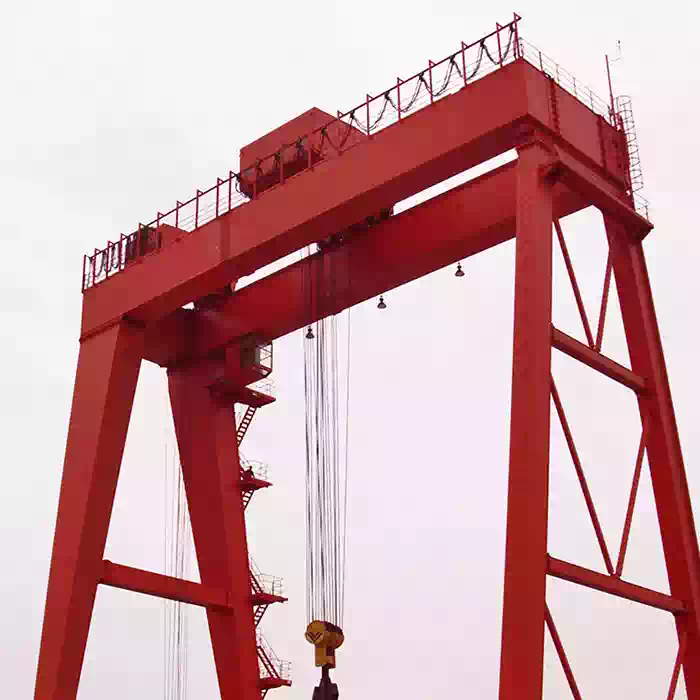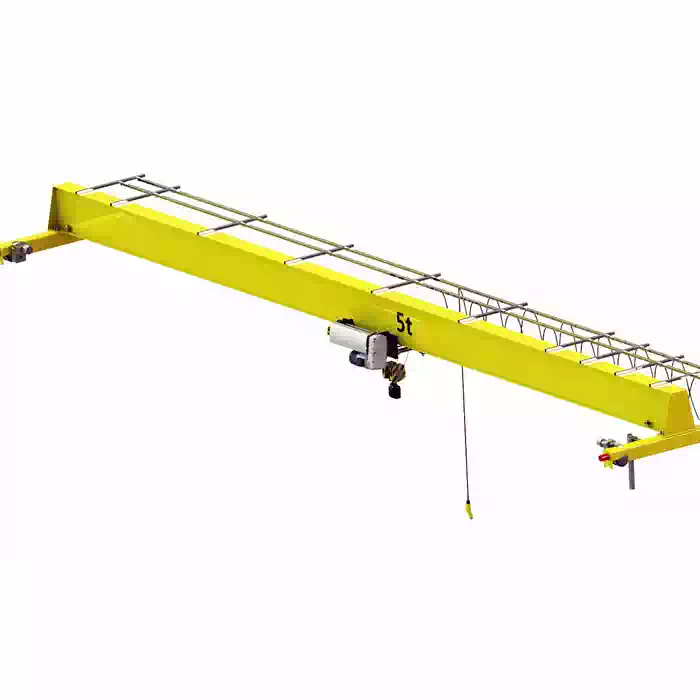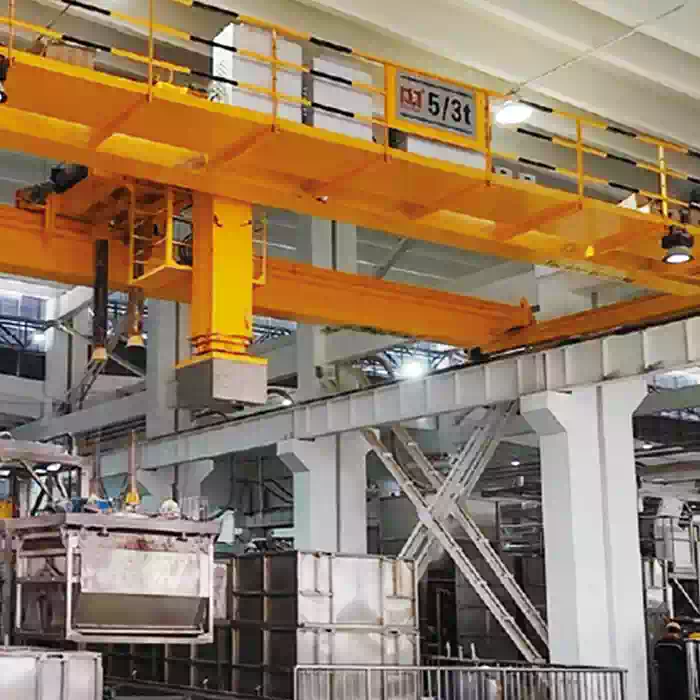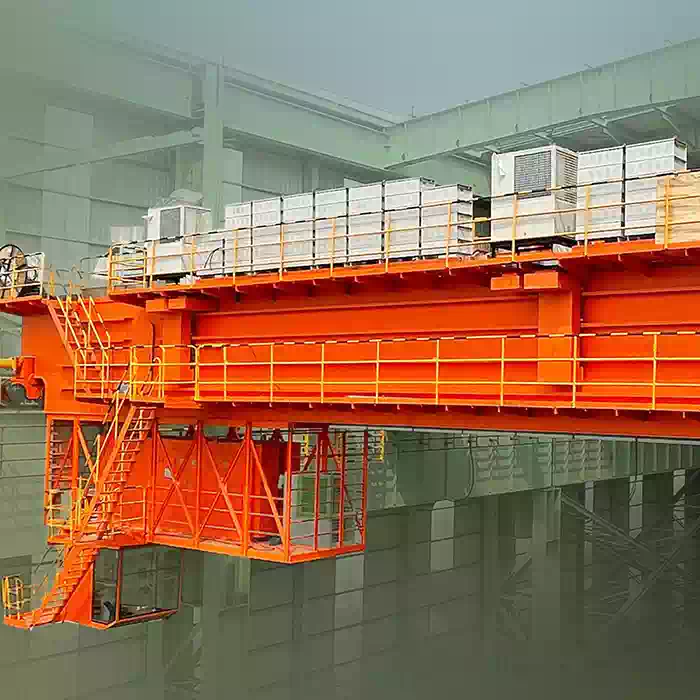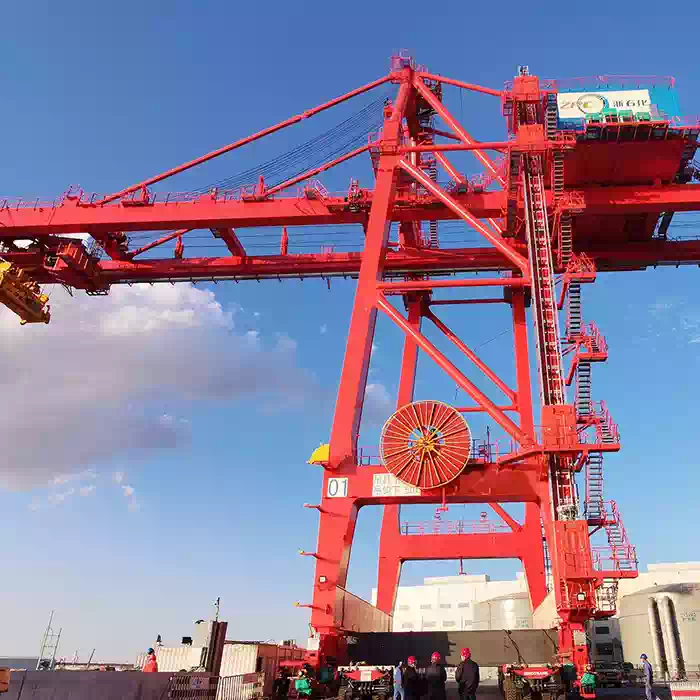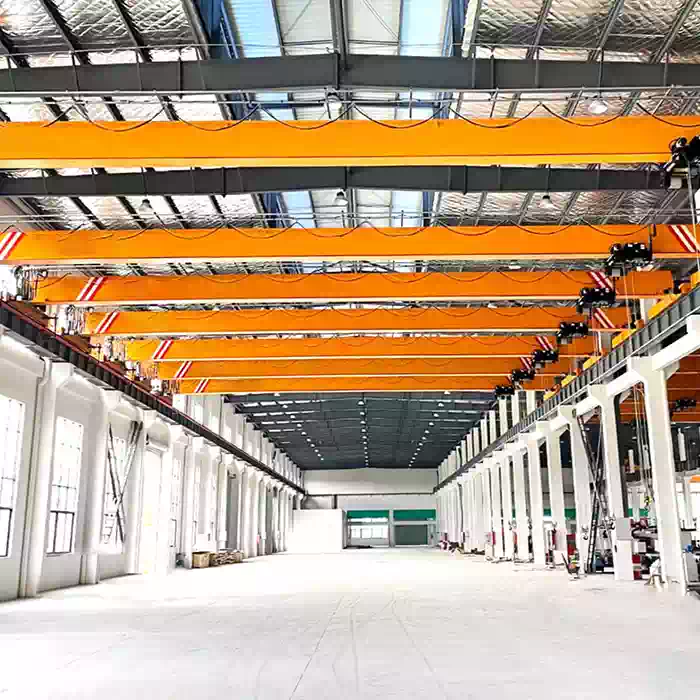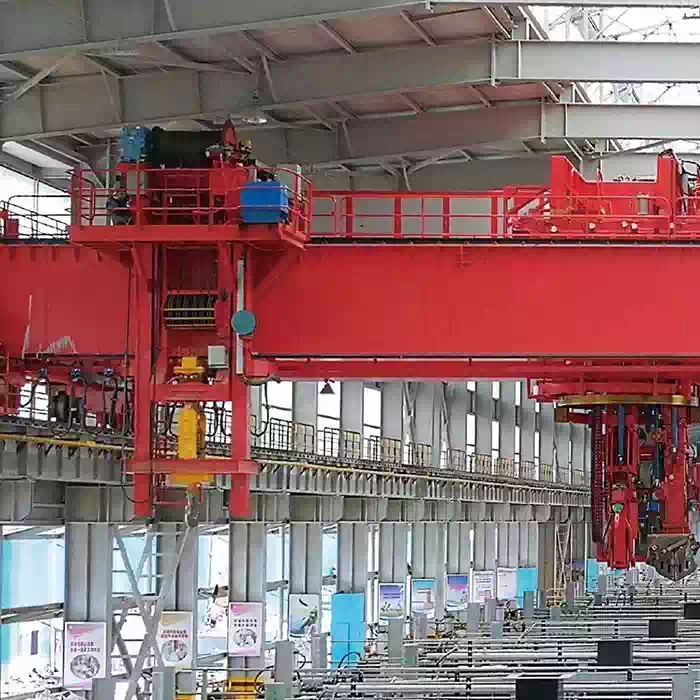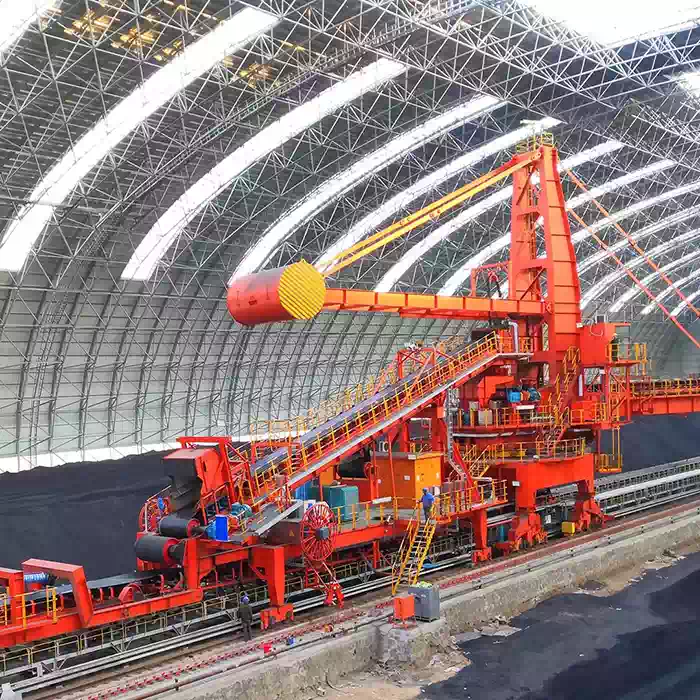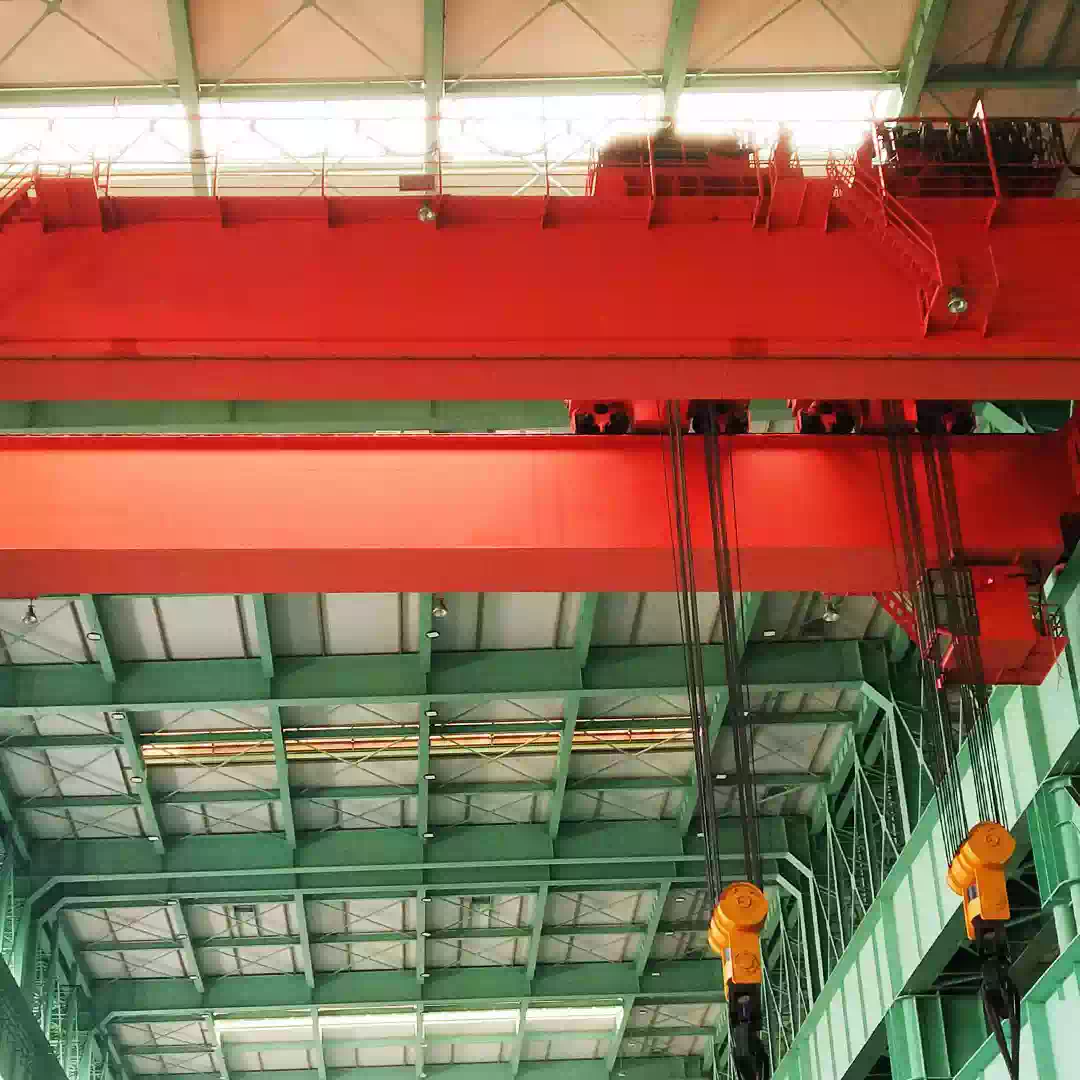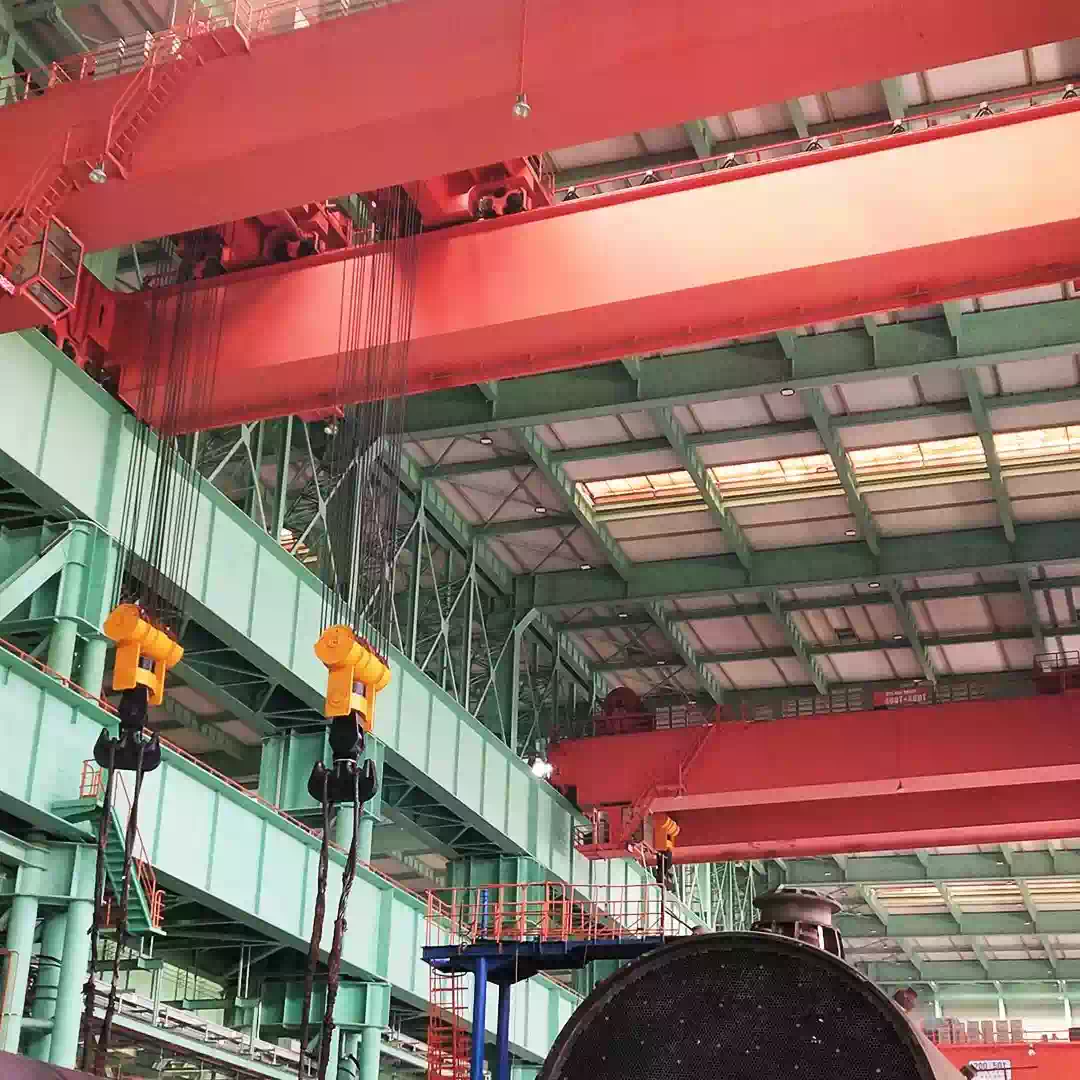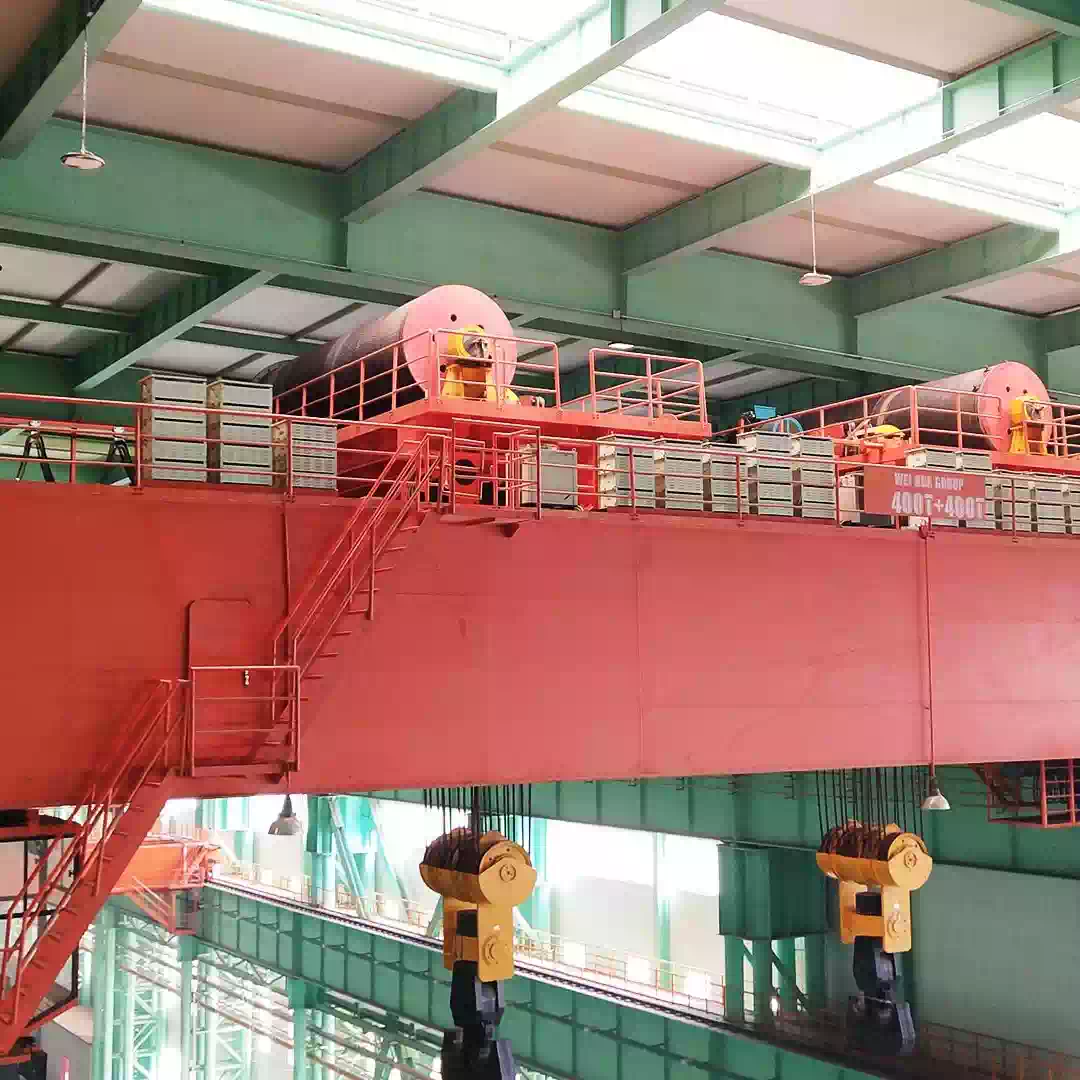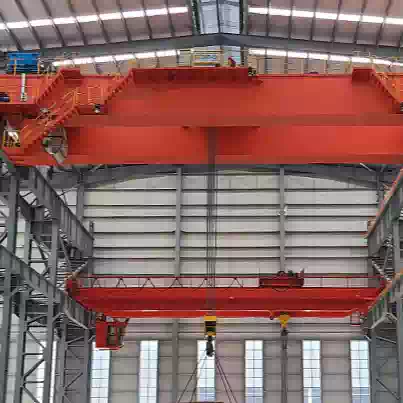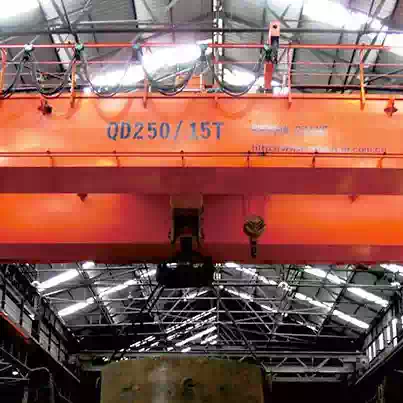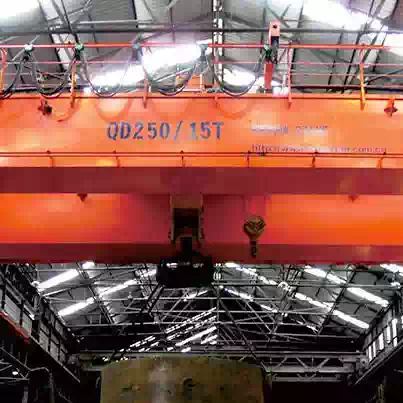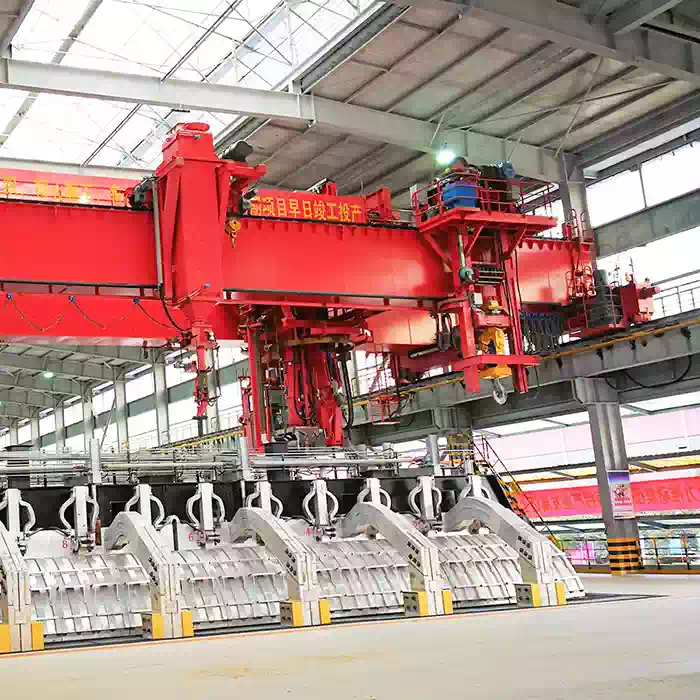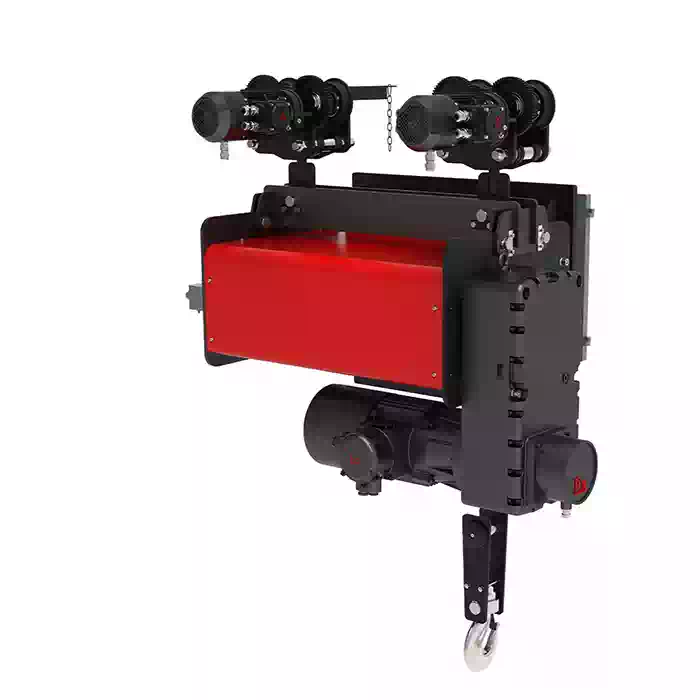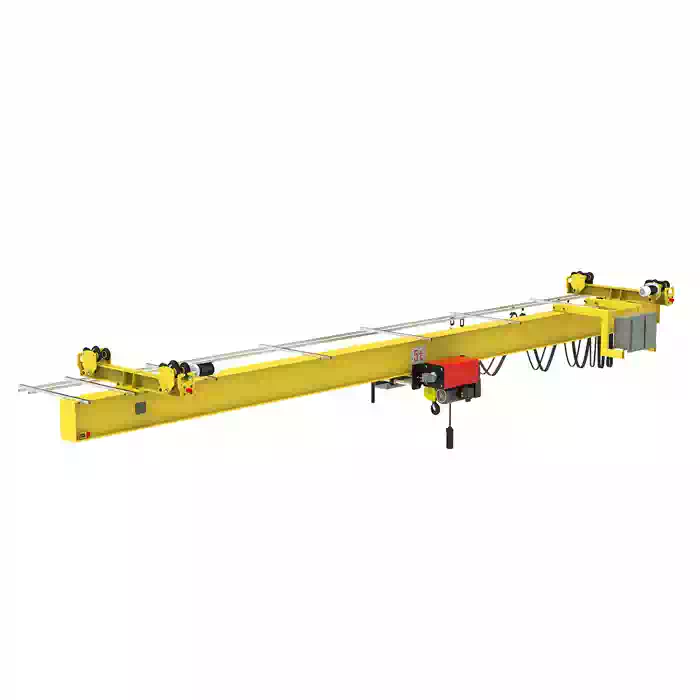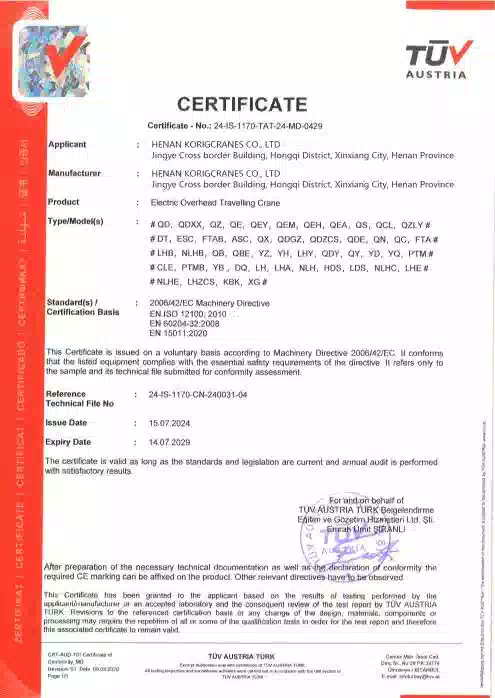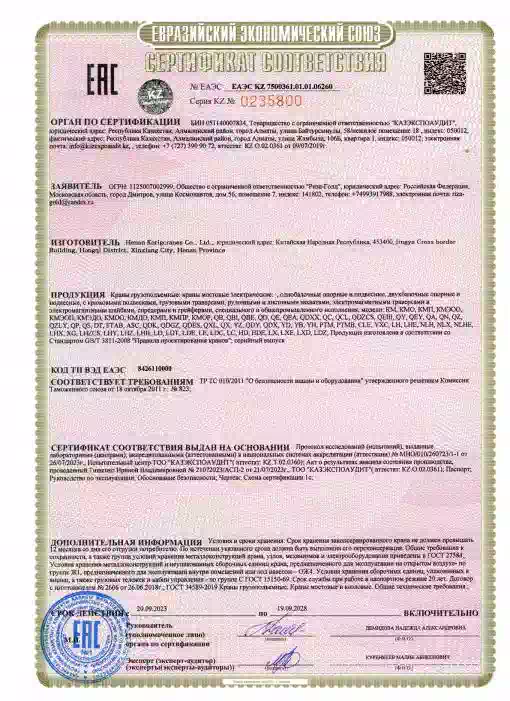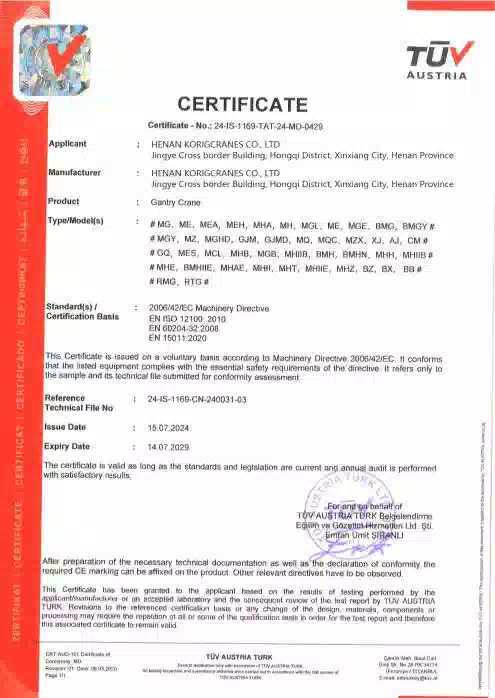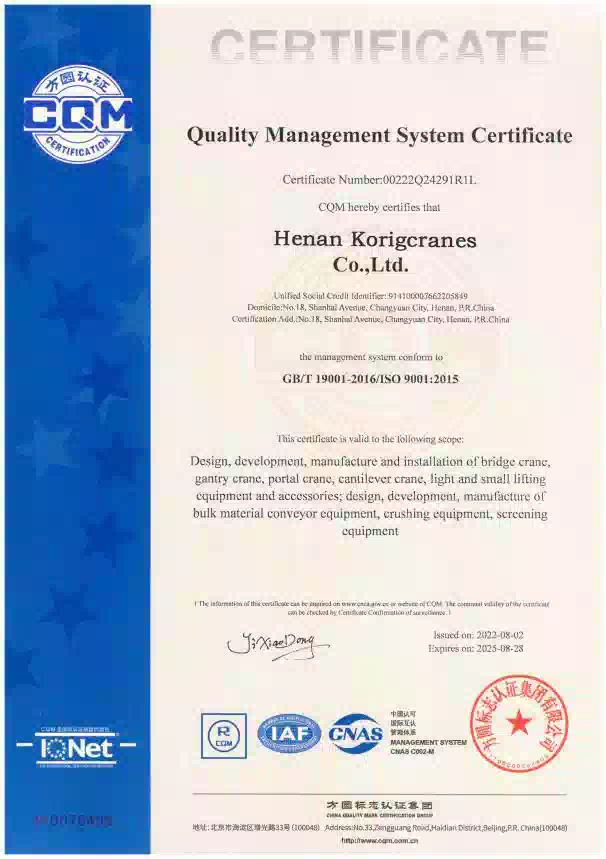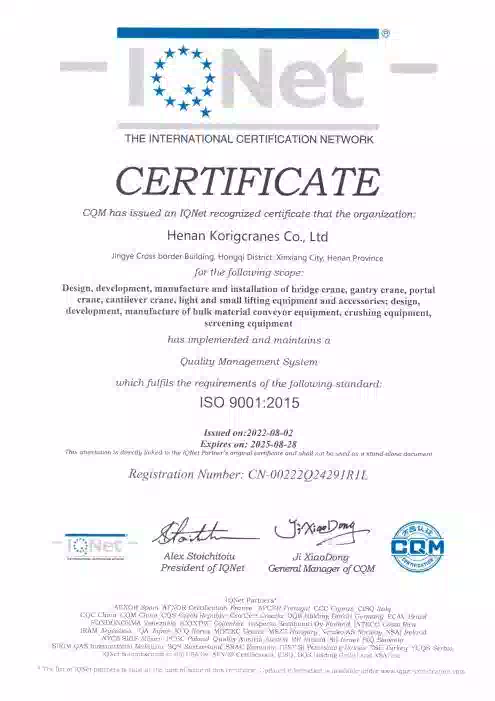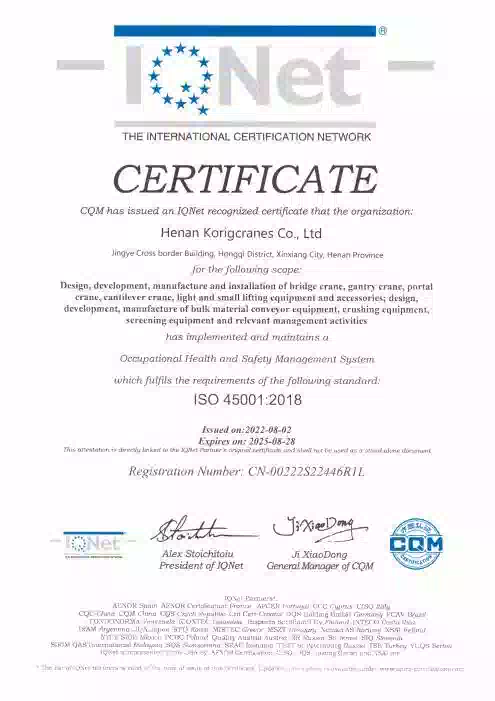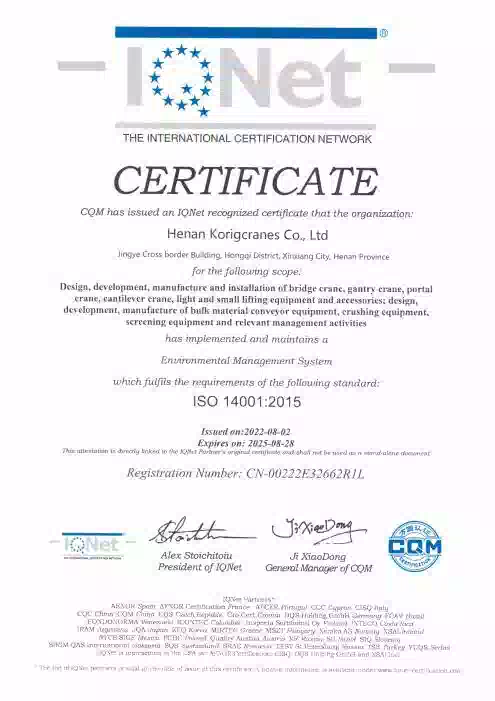

- A5
- A6
- A7
- A8
-

 Lifting hook
Lifting hook
Double girder hook overhead crane is composed with Girder frame, Crane travel device, and the trolley with lifting and moving device. There are Pave the rail for the trolley move on the main girder.Assemble the moving table on the outside of the two main girder, one side is prepare for the assemble and maintenance the crane move device, another side is prepare for the assemble of the trolley conductor device.There are full field of view Cabin suspend under the main girder, there are joint control desk or single control box packed within the Cabin, assemble the sidelong ladder between the Cabin and moving table, The main girder joint with the two side end carriage which with the joint point in the middle.
Features:
1. Double girder hook overhead crane is mainly used in various indoor workshops. According to different utilization levels and load conditions, it is divided into two working levels: A5 and A6.
2. The entrance of the cab can be 3 ways: side entrance, end entrance and top entrance.
3. The driver's cab can be installed on the left or right.
4. The crane power supply is from the safety conductor bar or angle steel, which can be on the opposite side of the driver's cab or on the same side of the driver's cab.
5. The operation of the crane is completed in the driver's cabin.
The Double girder hook overhead crane is engineered to function optimally within specific environmental parameters.
1. Suitable Working Environments
Industrial Settings with Temperature and Humidity Constraints
It is well - suited for operation in factories, where it can be utilized for tasks such as moving heavy machinery parts during production or assembly processes. In warehouses, the crane efficiently hoists and transports various goods, from large storage containers to palletized items. Freight yards also benefit from its capabilities, as it can quickly load and unload trucks or railway cars. These settings typically have an ambient temperature ranging from - 10°C to 40°C, which the crane's components are designed to withstand. Additionally, with a relative humidity not exceeding 85%, the crane's metal structures and electrical systems are safeguarded against excessive moisture that could cause corrosion or electrical malfunctions.
2. Prohibited Environments
Avoiding Hazards for Safe Operation
However, working in an environment with inflammable, explosive, or corrosive gas is strictly prohibited. Inflammable and explosive gases pose an immediate threat of ignition or explosion due to the sparks that could potentially be generated during the crane's operation, such as when the motor starts or stops. Corrosive gases can degrade the crane's metal components over time, weakening its structural integrity and reducing its lifespan.
3. Versatile Load Handling
Meeting Diverse Material Hoisting Needs
To meet the requirements of hoisting different types of materials, the crane can be equipped with various load handling devices. For instance, a motor grab can be attached to scoop up and transport loose or granular materials, like coal or sand. An electromagnetic chuck is useful for lifting ferrous materials, such as steel plates or iron bars. These attachments expand the crane's functionality, making it a versatile choice for handling a wide range of materials in the suitable industrial settings.



